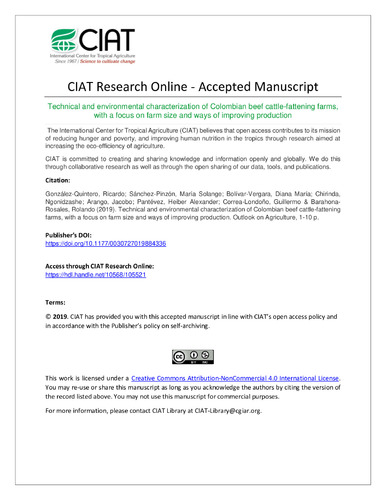Technical and environmental characterization of Colombian beef cattle-fattening farms, with a focus on farm size and ways of improving production
In Colombia, cattle-fattening farms account for 20.7% of the Colombian cattle herd and play an important role in terms of economic and social benefits for rural communities. However, few characterization studies have been conducted on these production systems, which limit our understanding of their production dynamics and environmental impacts. This study aimed to characterize very small, small, medium, and large cattle-fattening farms from technical and environmental perspectives. The data analyzed were obtained from the Ganadería Colombiana Sostenible and the LivestockPlus projects, which gathered information from a total of 2618 farms, classified according to their cattle production orientation. From those, 275 cattle-fattening farms were classified as being either very small (1–30 bovines), small (31–50 bovines), medium (51–250 bovines), or large farms (more than 251 bovines). Numerical and categorical variables were distributed into five components: (1) general farm information, (2) composition and management of the herd, (3) pasture management, (4) production information, and (5) environmental information. Each component was analyzed using the factorial analysis of mixed data (FAMD) method. According to FAMD, for the components general farm information, herd composition and management, pasture management, and production information, distribution of variables led to a spatial separation of the centroid from each category of producers. For the component environmental information, there was no separation of the centroid. Better infrastructure, machinery and equipment, better pasture management, and better productive parameters and practices were observed in larger farms. This suggests that those public policies aimed at improving productive and environmental performance of the livestock sector should give priority to small- and medium-sized livestock producers considering their farm characteristics.

